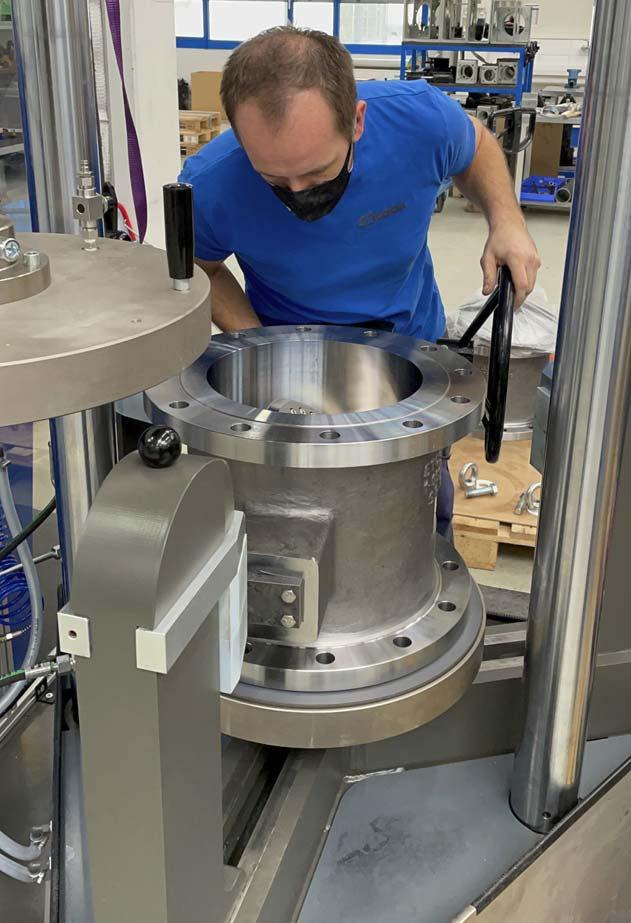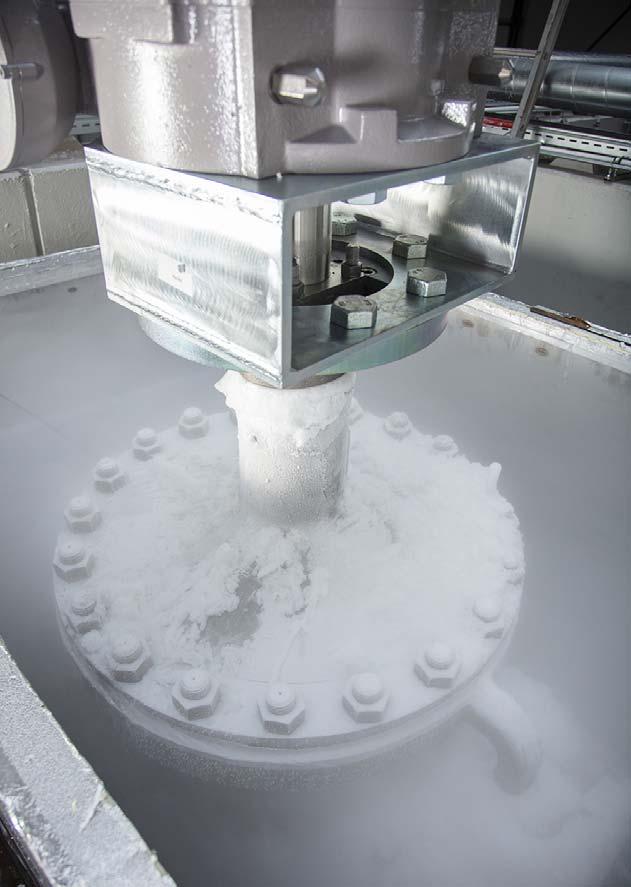
3 minute read
Undergoing rigorous tests





Scott Moreland, Quadax Valves Inc., outlines the various tests that Quadax’s valves underwent before they were installed at an LNG terminal in Europe.
Natural gas is often described as the cleanest fossil fuel. As such, the demand for LNG is steadily rising and will become increasingly important for many countries who want to add additional sources of supply. At LNG terminals, the imported LNG is unloaded from gas tankers at special berthing facilities and stored in large
LNG storage tanks. In order to keep the gas liquefi ed, the pipelines and the storage tanks withstand a temperature of -162°C. Before delivering to the transmission network, the liquefi ed gas will then be warmed up and evaporated.

Case study
Top entry valves are preferred for these applications, since the central top fl ange can be removed and all internal components can be easily extracted from the body.
Müller Quadax GmbH was awarded a large contract to replace side entry valves with top entry butterfl y valves at


Figure 1. Every valve is tested before delivery.

Figure 2. Cryogenic test of QUADAX® top entry valve. an existing LNG installation, as well as at a new LNG terminal. Located in Europe, this terminal enables access into the Northwest European gas market, with an initial throughput capacity of 12 billion m3/yr, which will be increased to 16 billion m3/yr in the future. This terminal is also equipped with three loading bays for trucks and a dedicated jetty for smaller (bunker) vessels.
During storage and transportation, natural gas could leak into the atmosphere, particularly on critical components such as measuring devices and process valves. Besides the negative environmental effect, these fugitive emissions could also have an impact on security. Therefore, the LNG terminal’s operating company requested an individual performance test for the approval of cryogenic valves that are installed in its terminals and storage tanks.
For this purpose, the cryogenic test according to BS 6364 has been combined with an endurance test according to EN 12567. The QUADAX® 4-offset Butterfl y Valve DN 500 mm, ANSI class 150 has been tested at the ITIS test laboratory in the Netherlands, specifying 10 thermal cycles with a fugitive emission test alternating at 20°C and -196°C. There was also an endurance test, with 500 mechanical switches at -196°C measuring the internal and external leakage after determined cycles. The benchmark in terms of the seat leakage was less than 3000 ml/min. for a valve of DN 500 mm based on BS 6364 and a maximum allowable fugitive emission of ≤1.0•10-3 mbar·l·s-1 at any time of the cycles. The valve was tested with helium at 19 bar test pressure whereas the seat leakage and fugitive emission was measured after 20/40/80/150/300 and 500 cycles.
Due to the four offset design and the precision in manufacturing, the butterfl y valves performed well in both high temperature and cryogenic applications.
The test institute ITIS BV certifi ed that the seat leakage did not exceeded a low value of 590 ml/min., and that no leakage was detected after 500 cycles. Moreover, the fugitive emission at the bonnet and trunnion gaskets of the top entry valve never exceeded a value of ≤1.0•10-5 mbar·l·s-1. The round seat and sealing geometry of butterfl y valves is a totally friction free metal-to-metal design. Due to this round geometry, after a couple of hundred cycles, the seat and sealing ring is literally looped-in and provides high tightness even if the material is shrinking and expanding due to extreme temperature differences.
Conclusion
Valves are critical components at each stage of the liquefaction and storage process at LNG terminals, and their performance and reliability are crucial for environmental and safety reasons. The QUADAX® Quadruple Offset Butterfl y Valve outperformed a severe thermal endurance test and provided evidence of its quality and reliability in LNG installations.
Additionally, the company’s top entry butterfl y valves fully satisfy the requirements of the EN 1473-2016 specifi cations for valves, and they are specifi cally designed for LNG applications where control and maintenance work can be performed safely and easily in the installed position without further risks to the service personnel.










